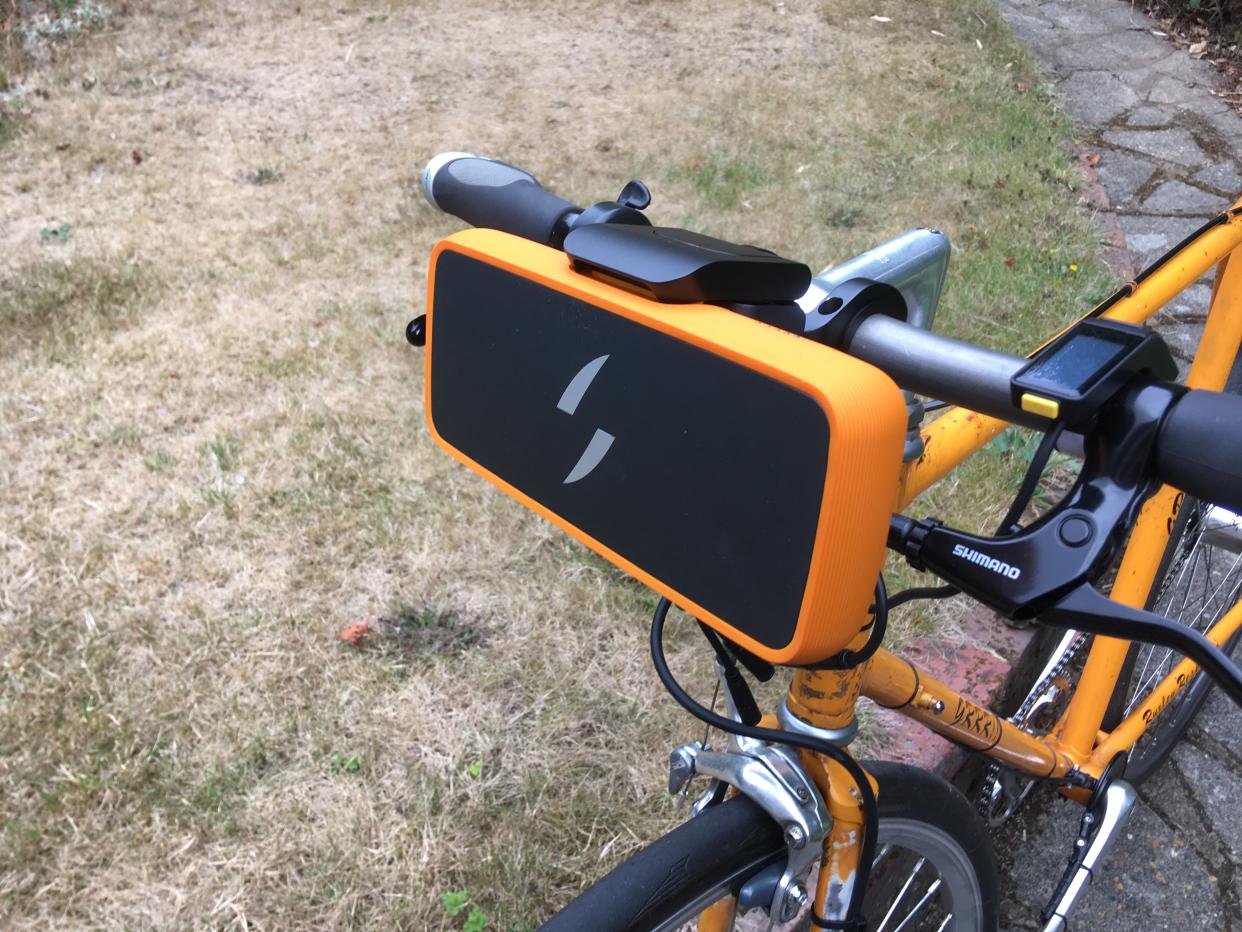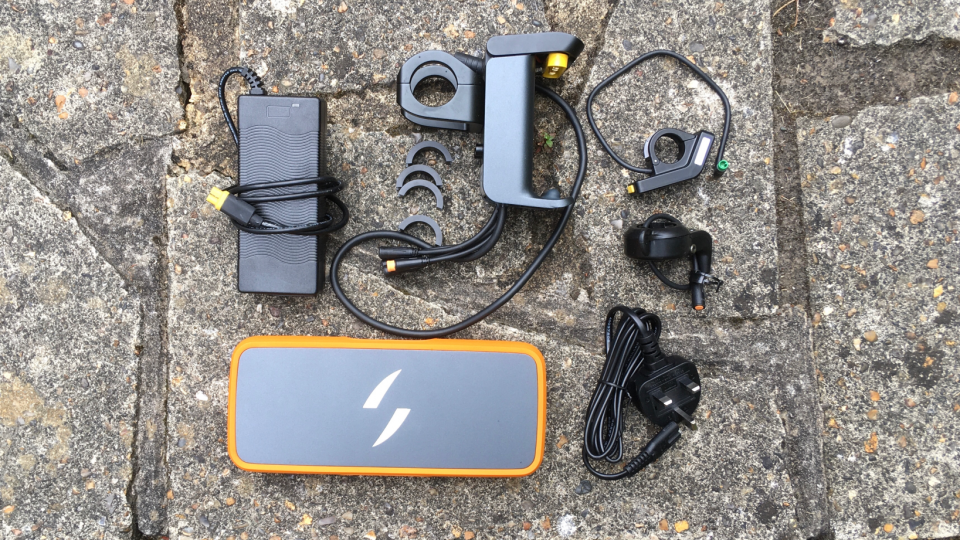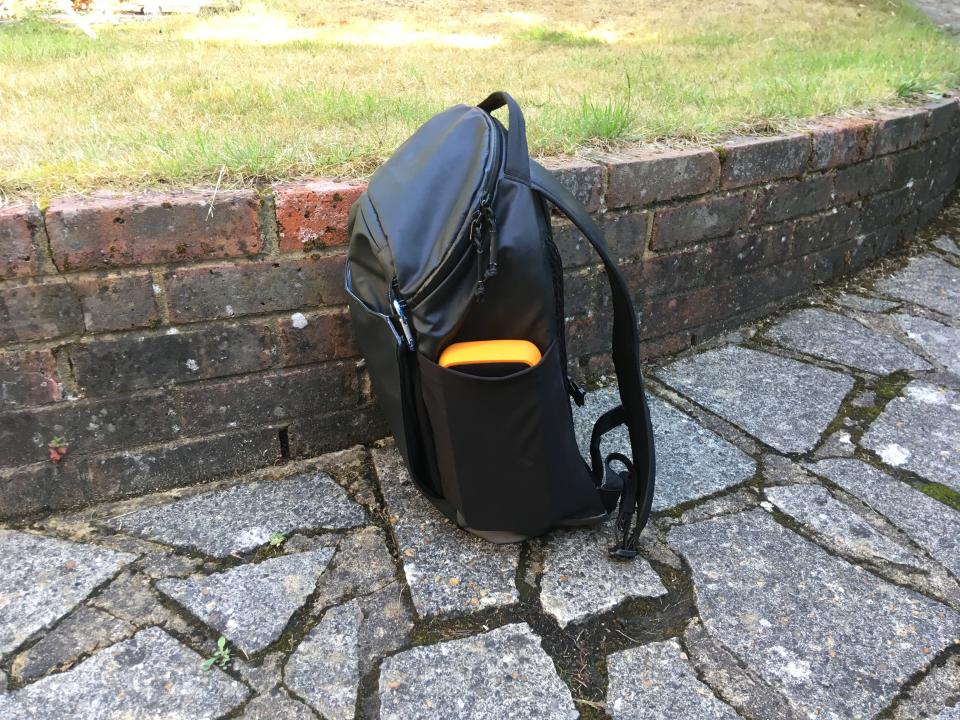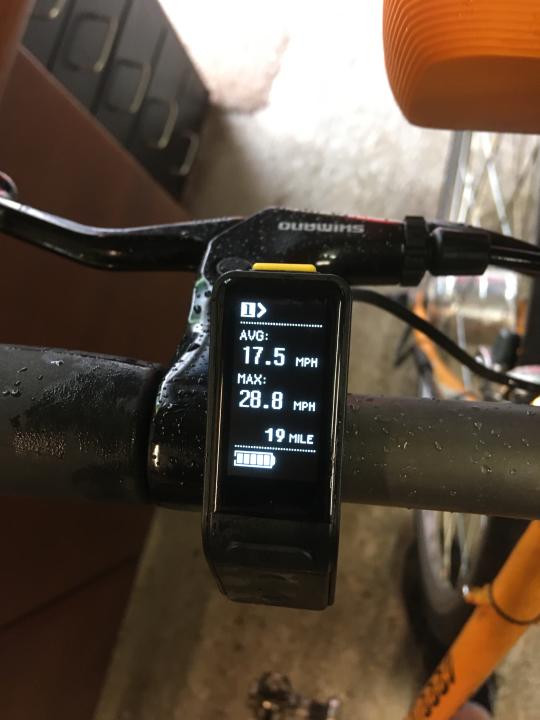New Swytch Bike e-bike conversion kit review: downsized battery, upsized fun

Swytch has launched a new e-bike conversion kit that features a 700g battery that it says is similar in size to a large smartphone and will turn any bike into an electric bike.
The new system upgrades Swytch's original Universal eBike Conversion Kit that I reviewed in March. It can be bought as a complete kit (front wheel with motor hub, mount, battery, sensor etc) or as and upgrade kit should you already own the previous version. The new battery and mount are the only changes to the kit - but they are substantial ones.
The new Swytch kit was unveiled in April, and has just launched to the public. I got hold of a pre-launch sample and have been testing it for the last three months. Here's my review.

Swytch eBike Conversion Kit: options and pricing
The upgrade kit contains the new mount and battery, head unit and there is an optional throttle too. Obviously it's cheaper to purchase an upgrade kit and reuse your existing wheel/motor and pedal sensor if you already have one, rather than buy another Swytch 250W motor wheel and pedal sensor, which are the same as before with no material changes to their plugs or functions.
The changes are in the new bar mount and battery - of which there are two new options: the 700g Air (claimed range 15km) and the 1,100g Max (claimed range 30km).
Both batteries are the same width and length but the Air is slimmer than the Max.
As regards to pricing, the full kits start at £999 but there is an introductory discount of 60% if you sign up to Swytch's email via its website. So to keep it simple I'll put in those discounted prices here:
* Full kit with Max battery: £499 (folding bike version £624)
* Full kit with Air battery: £399 (folding bike version £524)
* Upgrade kit with Max battery: £349 (as tested in this review)
* Upgrade kit with Air battery: £249
Unboxing and set-up

The new mount - which fits either battery - weighs a little more than before (602g vs 330g) and there is an OLED display needed to run the system now which weighs 37g. This controls the functionality that previously was on the battery pack itself. An optional thumb throttle weighs 41g.
The new bracket is nicely made from aluminium and came with a variety of spacer shims (22.2mm, 25.4mm & 26.0mm) and the mount is 31.8mm as default so the vast majority of bars are catered for.

The battery is locked into place via a locator bar on the base, then the handle on the top is lowered and clicked into place to connect the battery and secure it. The system is then activated with a three-second press of the ON button on the display.
I was sent the 1,100g Max battery, which Swytch says weighs 1,100g (I measured 1,003g). It's still lighter than the original Pro battery weight of 2,077g. Even with the extra weight of the new, heavier mount you're still carrying 700g less on the bars, which improves the bikes' dynamics and handling.
The Max has a range of around 30km assistance (using setting 2) says Swytch, and the Air is 15km. This may not sound that much, certainly compared to the old Pro battery with its 50km range, but in reality I found some surprising things out...
The Swytch kit took less than 30 minutes to fit, including removing the older parts and working at a steady pace. It was very straightforward. I fitted the optional thumb throttle as well. It all worked straightaway with no fettling needed, and in fact working out how to power it up was almost the longest step! It's a three-second push of the ON button on the display by the way.
The ride
The first thing that I noticed is how having less weight on the bars immediately feels less cumbersome. Before there was a tendency for the front wheel to flop right round when putting a bike on its kickstand. It still does that a bit but much less so.
Since my previous review I have continued to use the Swytch system several times a week and through that I have found that I only use two gears on my Pinnacle utility bike. Middle and outer front cogs and fifth at the rear. So for this testing of the new system I thought I'd try it on the Pinnacle but I also put together an old steel frame with a two-speed hub (geared to 53in and 73in). These are two ratios that I'm really comfortable with anyway.
This bike was meant to be really simple and light and before any Swytch parts were fitted it weighed under 21lb (9.6kg). After the wheel and kit was fitted it weighed 28lb (12.7kg).

So the main thing to note really is how fun this two-speed bike is to ride; fast, nimble and responsive. The battery and motor mean that any hill is straightforward in first gear even with the assistance only set to #2 (medium setting on the display). You can select more assistance up to #5 (extreme hill mode) should you wish. Once on the move I tended to remain in the taller gear 2 (73in) and only change down when it steepened dramatically or I had to stop at a junction.
I found that I covered the ground easily at an average of 17.5mph, and maxed out at 30mph on downhills. When the older Pro kit was fitted before to a road bike with gears it felt like I was having to push hard to go past the assistance phase and it wasn't that much fun. With the heavy utility bike it made it nicely useable and fun, and with this old steel two-speed it feels really fun!
I seem to be able to go past the the assistance phase without compromising the bike's dynamics. With a 73in gear you're never going to go really fast but I found that I was usually in a 17-21mph window most of the time. Either the motor has worn in with six months of regular use or the battery electronics have somehow been improved... n addition, because I've usually left it set to #2 (medium assist) I've found that I've covered 20 miles but only used two bars (out of five) on the battery.
I then moved it back to the Pinnacle utility bike to test the battery life further. I ride with the settings on maximum assistance (although at the expense of battery life) with this bike. My regular routes are around a couple of miles and tend to involve long draggy hills on the return. I managed to get four or five routes per bar of battery which I felt was really good.
Another bonus of the smaller battery is that when used on errands it removes quickly (as before) but due to its slimmer profile it will easily fit in the side pocket of my backpack. It frees up both hands in the shop.

The optional thumb throttle was rather fun too. You don't need to pedal to operate it and it will apply power up to 15.5mph (legal maximum in the UK). I found it useful starting off from an uphill junction where you'd normally need a turn of the pedals before assistance kicked in. It may be of benefit to people with a singlespeed bike or food delivery operatives, but for me, I removed it for simplicity's sake.
The OLED controller is rather nice too. It has four buttons: two to go up or down with the power settings, one cycles through the stats (average and max speed, time etc) and the on/off button on the top. The display is clear to read but I would prefer the power setting to be a little larger as trying to read it in the rain whilst wearing glasses wasn't easy. The speed was easy to read though.



Technical considerations
A couple of thoughts on compatibilities. I like to ride with a light and although this setup sits pretty low I found that my light needed to be set right next to right brake lever to be able to light the ground ahead of me at night. It was always visible to cars though. So you'll possibly need to have a tall light bracket or move it across to get the best vision. However the Swytch mount can, I'm told, be rotated 90 degrees so that the battery sits vertically. There is also the possibility say Swytch of future brackets becoming available which would mount the battery in the bottle cage area which would give better weight distribution and free up bar space for lights or even a basket. Even more practicality on a utility bike!
The other thing to note is when choosing an older frame to convert is that Swytch use a 10mm axle dropout width. My old frame was a 9mm type so I had to do a little modification. It wasn't difficult, but if you're unsure it's best to seek some expert advice, because the last thing you want is a failure on a fork dropout.
One of the great things about a conversion kit though is that it can be put onto an older bike to give it another lease of life. I see plenty of bikes at the re-use shop at the council tip that would benefit from this conversion.
Conclusion
This summer, whilst on holiday in the South West of England, I saw plenty of electric bikes, certainly compared to last year. The area is quite hilly and there was a real variety of types from Swytch's to purpose-made big brand offerings. It was great to see them taking off as a practical means of transport especially in the small roads in the coastal villages, as well as with older couples after a little extra help.
I very much enjoy using the Swytch system and have found that in long-term use that it often replaces a car journey for short, local errands for me. The change of battery has improved the bikes' dynamics and it is much easier to pop into a backpack when removed from the bike. The longer rides that I undertook were also great fun.
Overall this version is an improvement over the previous kit, even if the range is reduced. However I think that the range is on the conservative side, as you can see from my testing (above under 'The ride'). A really worthwhile update to a good system.
The Swytch kit is available through Swytch's website at www.swytchbike.com.

